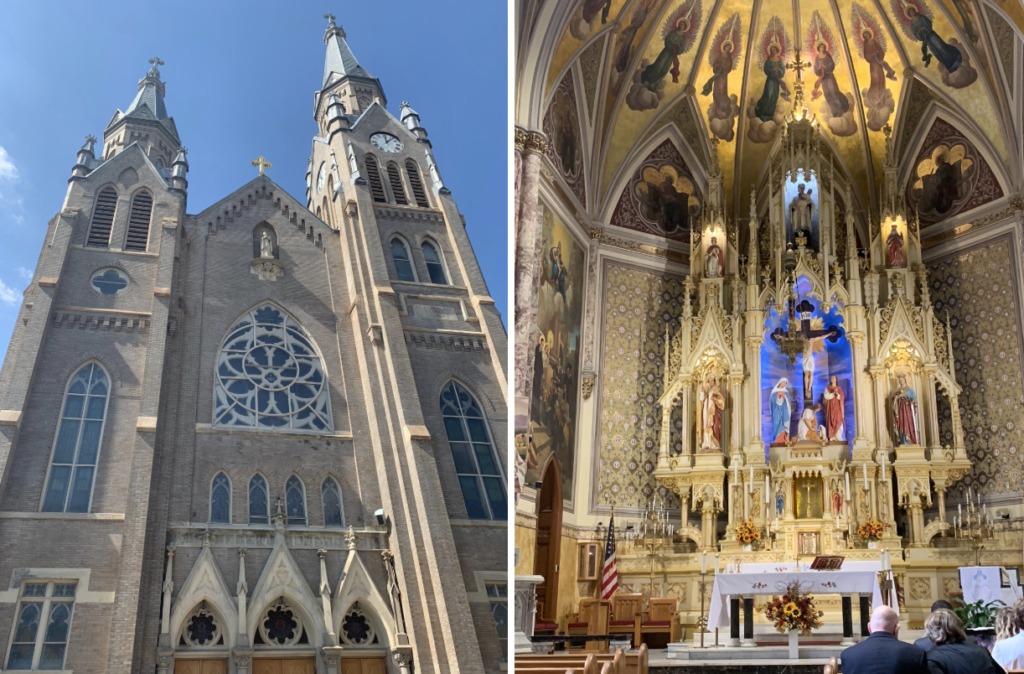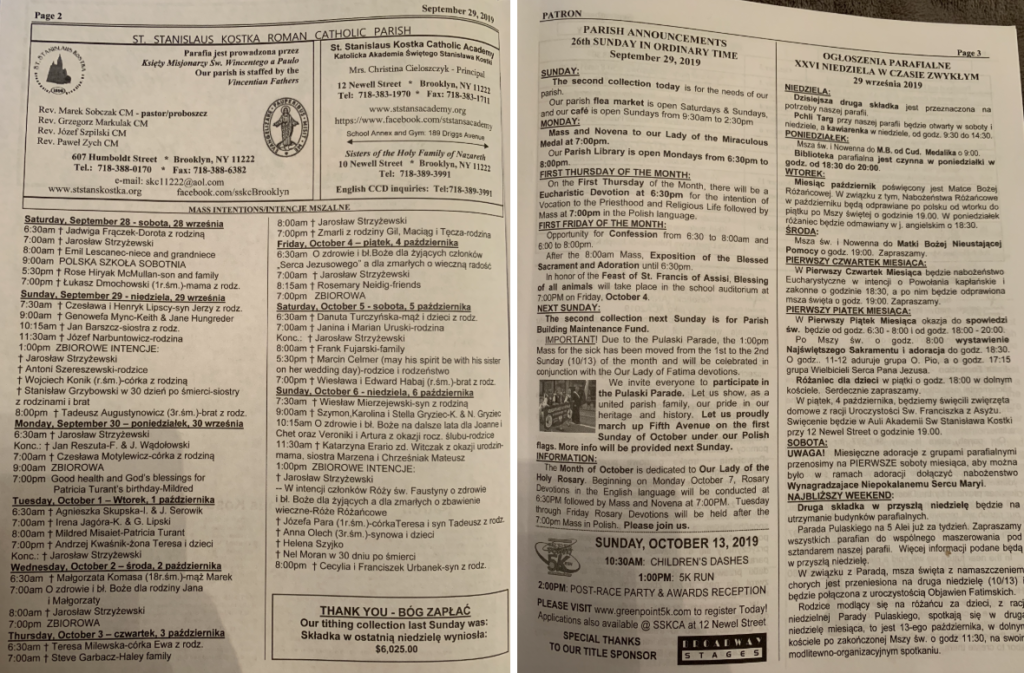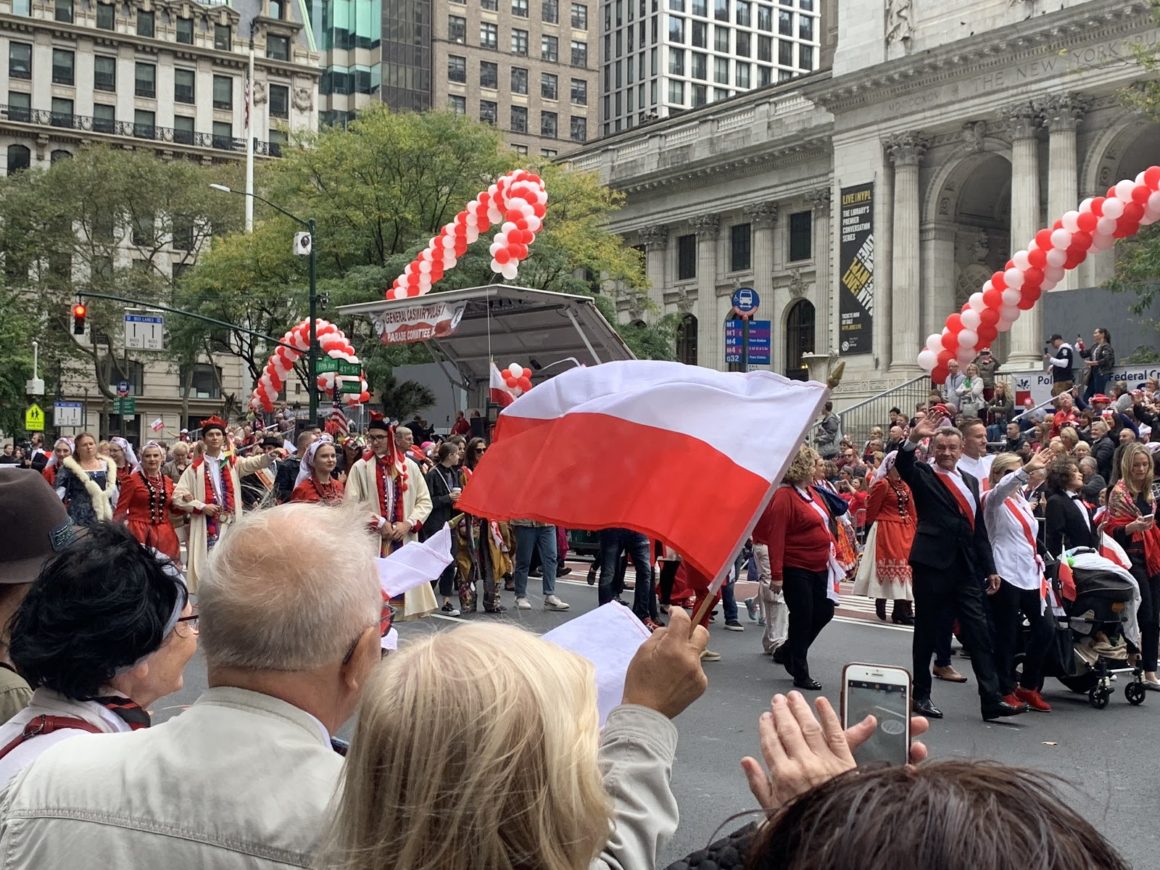There was a time not long ago when you could travel to Poland just by taking the subway to Greenpoint. But now, if you want to experience Poland, you should probably book a ticket to Warsaw.
A neighborhood once called “Little Poland” is now an extension of Williamsburg. Instead of back-to-back Polish businesses on every block, trendy millennial restaurants and boutiques have opened. Case in point: a chai cafe sits across from St. Stanislaus Kostka Church, the oldest and first Polish church in Greenpoint.
Yet, the Poles who still live in Greenpoint — or who grew up, moved away but return to pray and shop — see the neighborhood as their home and are determined to preserve what makes Greenpoint unique.
For decades, a Polish immigrant could live in Greenpoint and never have to learn English. Greenpoint had newsstands with Polish newspapers, bookstores with Polish books, Mass in Polish, food stores like Kiszka stocked with kielbasa and parowki, and pharmacies with Polish remedies. For their children, there was Polish school, Polish folk dancing, and no shortage of other young Poles to marry; some even married their next door neighbor.

“It was like you would walk into a store and you could have a conversation,” says Anna Bassett, who grew up in Greenpoint and stayed until she was 26. She now lives in Connecticut and returns often with her husband and daughters to see her parents. “It was like you were friends with everybody. And now it’s completely shifted.”
Poles began immigrating to New York first in the 19th century and then largely in the late 20th century, with an influx of arrivals in the 1980s and ‘90s. According to 2013 data from NYC’s Department of Planning, 12,712 Poles immigrated to New York from 1982 to 1991 and 4,032 of these immigrants were refugees who fled after the martial law was declared in 1981. From 1992 to 2001, another 28,464 Poles arrived in New York with visas secured through the Diversity Visa Program.
At its peak, say local residents, Greenpoint’s population was estimated at 80 percent Polish — a number that cannot be confirmed. Now, they say, it is down to 20 percent. But those who left for Ridgewood, Maspeth, as well as New Jersey and Connecticut, are seldom away for too long. They come to shop at stores where the lines get long at holiday time. They come for weddings, christenings, and funerals. Often that means coming to St. Stanislaus Kostka. Founded in 1896, the church remains a focal point for Greenpoint’s Poles. Karol Cardinal Wojtyla visited the church in 1969 before he became Pope John Paul II. So did Lech Walesa, the first democratically elected president of Poland.

Exterior and Interior of St. Stanislaus Kostka; photos taken by Natalia Ryzak
Despite the decline in Greenpoint’s Polish population, the church still offers eight Sunday Masses, six of them in Polish.
I had gone to St. Stanislaus to see Father Joseph Szpilski. I had called the church several times, and each time I spoke in English got nowhere. But when I walked into the rectory and asked the secretary in Polish, who had been less than helpful before, whether the Father was in, she suddenly became eager to help. She even offered a word of advice. “This isn’t Little Poland anymore,” she said with a laugh.
Father Szpilski continued the conversation in Polish. He told me that the church “is not what it used to be” — there are fewer events, fewer children enrolled in programs, and fewer Polish people in Greenpoint.
And yet, the church’s newsletter provided a lengthy list of daily events and masses: a flea market, dinners, weddings and funerals and memorial Masses listed by name. He added that the church could always add more if they were wanted.

Greenpoint’s Public School 34 began a dual Polish-English program just six years ago. The program operates on a “weekly” schedule. For example, ‘A’ week will have the students classes in English in the mornings and then in Polish after lunch, while ‘B’ week is the “exact opposite.”
Despite the declining Polish population, said principal Carmen Asselta, the number of students enrolled in the dual program has continued to increase and that as a result, the school has added more grades to the program. Asselta said that the Polish establishments in Greenpoint and New York support the program and are a large reason for its success. For example, the Polish Consulate has donated books, libraries, and brought in Polish artists who came to the school.
Asselta said that P.S. 34 tries to “incorporate [Polish] culture into the fabric of the school.” She said the school celebrates Polish holidays and participates in such traditional events as Easter egg decorating workshops and Polish Flag Day. The school celebrates the Polish Day Parade, observes Polish bilingual day and Polish heritage month and recognizes such Polish luminaries as Marie Curie. Additionally, the Jozef Pilsudski Institute, which archives Polish history, has a partnership with the school. The institute relocated to Greenpoint from Manhattan about five years ago.
Anna Bassett was back in Greenpoint not long ago for her second daughter’s christening at St. Stanislaus — or, as she said, Saint Stans. It is where her parents were married. It is where she was christened and married. Her husband is American and at first this did not sit well with her “old school” Polish parents.
“My dad was like ‘he’s not Polish; this isn’t happening’,” she said. “And then, when he saw that my husband was very willing to accept us, accept the culture, accept the language, it really made him feel like our culture will continue on. I think that’s just that strong sense of a Polish father, very old school, conservative; he really wanted a Polish husband.”
Bassett credits her husband with “seamlessly” adopting the culture, and she thinks it “gave him something to identify with as well,” adding that her husband became so involved and supportive that her father never regretted her choice.
“Once [my father] saw that the only difference is the language and everything is still alive, he was definitely much more relieved,” she said.
While Bassett may have found a way to ensure her home will reflect Polish traditions and values, such as planning to send her daughters to Polish school, others are trying to instill that ethos on a larger scale.
Among them is Christopher Olechowski, the former chairman of Greenpoint/Williamsburg’s Community Board 1 and former Democratic district leader in Brooklyn’s 50th Assembly District. In 2013, Olechowski drafted a petition to create an affordable housing complex for Polish residents in Greenpoint. The petition was a response to the increasingly expensive cost of housing in gentrifying Greenpoint. He drew on historic suffering as a reason for the city to secure them affordable housing.
“We believe that as a Polish ethnic community we are completely dismissed and discriminated against in the present circumstances surrounding these great economic shifts that are affecting our neighborhood and our community,” he wrote. “Basing these changes on unprecedented profit-driven luxury housing eliminates any chance of retaining our ethnic character in our neighborhoods.”
The petition, however, was ultimately rejected. A spokesperson for the city’s Department of Housing Preservation and Development characterized it as “as ‘discriminatory” because it was designed for only one ethnic group.
“It was a shot in the dark. It was kind of a cold, wild, so to speak,” Olechowski said. “But I thought it was the right thing to do. I didn’t think I was going to succeed necessarily, but I did file this petition.”
In recent years, Father Szpilski told me, most Poles emigrated to England instead of America, given how hard it was to secure a U.S. visa. But recently, President Trump announced that Poland will join a visa waiver program, which could allow Poles to have easier access to gain entry into America. It is possible that with certain policy changes like this, things for Greenpoint could change.
“I hope that will increase how many people come here,” said Bassett. “I think that the biggest thing is making sure that they have jobs that are not just the jobs that my parents took whether it was cleaning or working in the factories.”
For all the laments about what has been lost in the transformation of “Little Poland” there are some who see good in the change.
Agnes Wroblewska has lived in Greenpoint for almost 20 years and says she is happier with Greenpoints shift. She likes that more professionals have moved into the area and notes how the neighborhood is much safer and cleaner than it used to be.
“It was dirty, it was grey, it was ugly,” she said. “There were a lot of Polish drunks sleeping on the streets.”
She went on to say that before the neighborhood’s gentrification, she would have never lived in Greenpoint. But now, it is home.


Leave a Reply